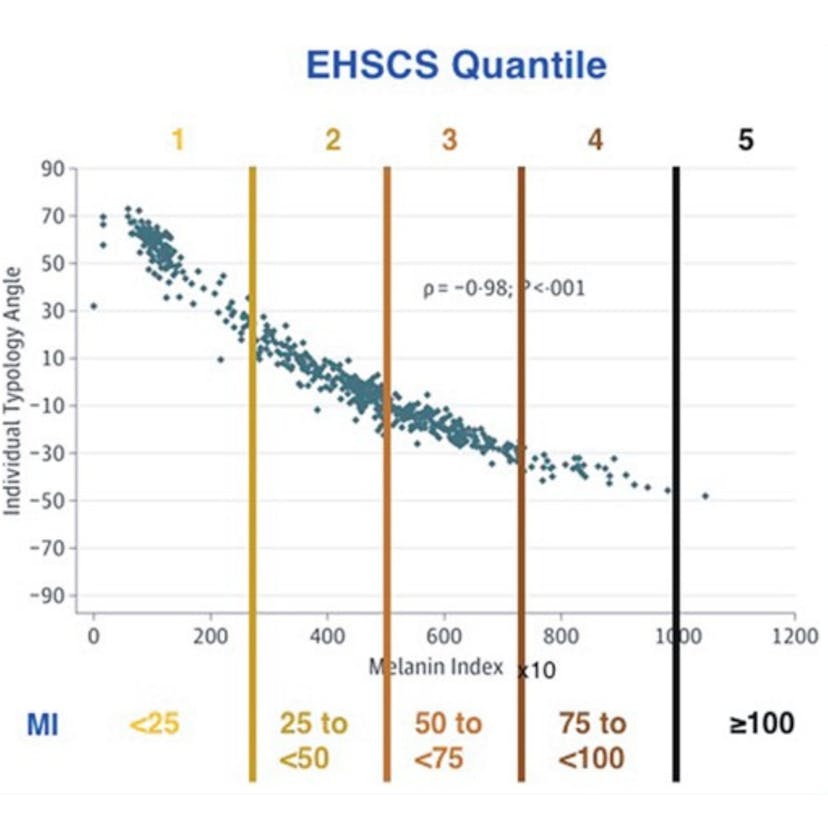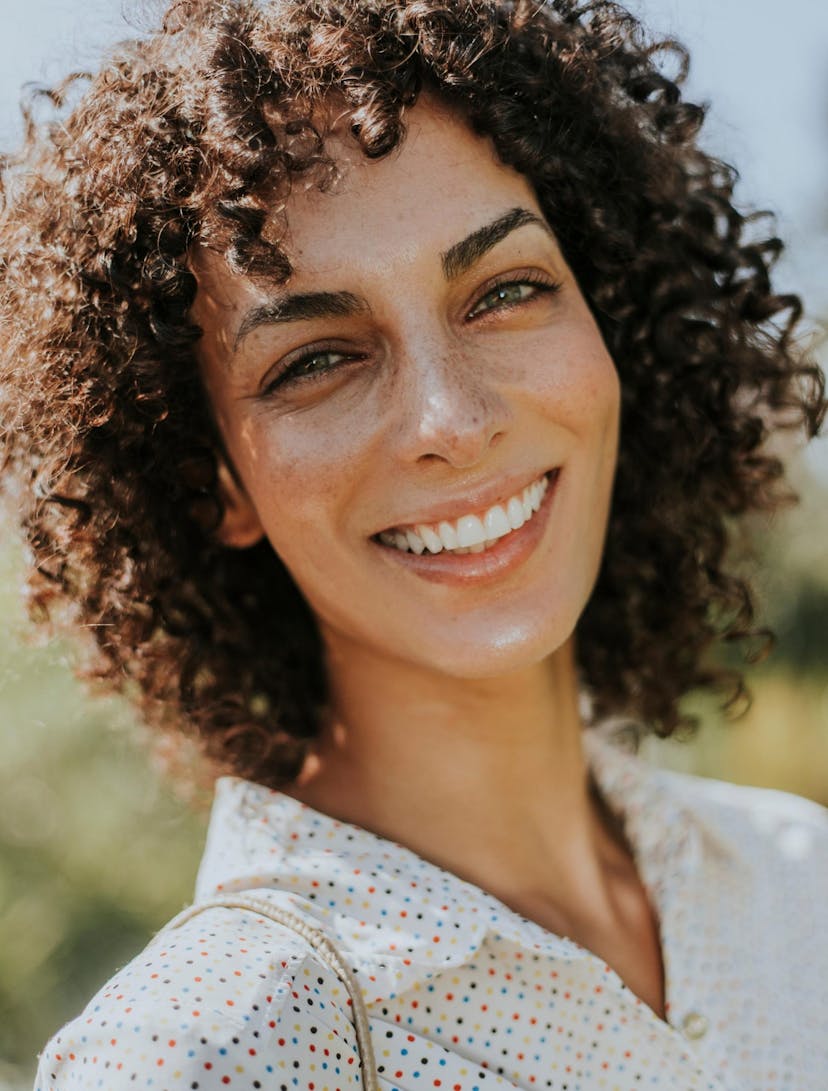Everything You Should Know About Your ‘Fitzpatrick Skin Type’
5 minutes read
We might all find ourselves quite unfamiliar with the word ‘Fitzpatrick skin type‘. It’s a descriptive term that dermatologists use to measure how our skin reacts to sun exposure.
Beauty Daily sat down with three experts to find out: How to know your Fitzpatrick skin type and if Fitzpatrick skin type can be used to choose skincare and more. Read on.
What is the Fitzpatrick skin type?
“The Fitzpatrick skin type (or phototype) describes a way to classify the skin by its reaction to UV exposure. Our reaction to sunlight depends on the amount of melanin pigment in the skin,” Dr Mia Jing Gao, consultant dermatologist at the Royal Free Hospital, London, tells Beauty Daily.
Melanin production increases when the skin is exposed to the sun, which explains suntan and sunburn.
However, some people use the FST scale differently. Dr Leslie Baumann, dermatologist, researcher and author, explains: “Many people use them incorrectly by describing constitutive skin colour and ethnicity, but it is a measure of how your skin reacts to ultraviolet B light. For example, does it burn or tan?”
It is also a useful tool for experts to determine one’s skin cancer risk and assess how skin reacts to specific cosmetic procedures such as laser hair removal, chemical peels, dermabrasion, tattoo removal, spray tanning, and laser resurfacing for acne scarring, among others.
“It is important to know, especially if you are considering laser treatment, as we use the Fitzpatrick skin type scale to determine what treatment options are best for you,” says Dr Karan Lal, a cosmetic dermatologist.

What are the six Fitzpatrick skin types? Do I need to go to a dermatologist to find out?
There are six Fitzpatrick skin types. Dr Fitzpatrick developed them at Harvard to determine what dose of UVB to use to treat psoriasis. In addition, it has been used in Dermatology to assess the skin’s reaction to sun exposure, tanning potential, assessment of sunburn risk and the amount of sun protection required for individual patients.
The good news is that you don’t need a dermatologist to determine your Fitzpatrick skin type. Below is a chart used by dermatologists to assess your Fitzpatrick skin type.
| Fitzpatrick skin type classification | Description |
| Fitzpatrick skin type I | skin always burns, never tans, and is sensitive to UV exposure |
| Fitzpatrick skin type II | skin burns easily and tans minimally |
| Fitzpatrick skin type III | skin burns moderately and tans gradually to light brown |
| Fitzpatrick skin type IV | skin burns minimally and always tans well to moderately brown |
| Fitzpatrick skin type V | skin rarely burns and tans profusely to dark |
| Fitzpatrick skin type VI | skin never burns, is deeply pigmented, and is least sensitive to UV exposure |
Source: Skin Cancer as a Major Public Health Problem
How do I know my Fitzpatrick skin type?
“Refer to the Fitzpatrick skin type scale and choose which one describes you best. Choose the one that best describes how your skin reacts the first time you are exposed to the sun after not being in the sun for three months. The scale asks shows how your skin reacts in the sun without sunscreen,” explains Dr Baumann.
While it is still used today, the Fitzpatrick skin type classification system is outdated and subjective. So, there is a simmering backlash by some professionals.
“There is an increasing move away from using the Fitzpatrick Skin Classification System to describe skin because it is an imprecise scale and focuses more on the range of variation in European populations with more lightly pigmented skin. New classification systems, including Eumelanin Human Skin Colour Scale (EHSCS), are reported to be more objective,” explains Dr Gao.
The EHSCS is a descriptive skin colour scale. It is used as a better way to examine skin of colour and ethnic skin with no social or race‐based connotations. It is an objective scale solely based on the melanin index (MI), which reflects the amount of melanin (specifically eumelanin) in the skin.
Eumelanin is the pigment that determines a person’s skin colour and we all have it in differing amounts.
The British Association of Dermatologists (BAD) listed five categories of EHSCS and their associated MI cut-off points:

Image source: BAD
The EHSCS scale shown as 1 to 5 indicates lightest to darkest. Dermatologists use this scale to determine the way a person’s skin reflects light of predetermined wavelength(s) and is measured using a skin reflectance instrument as opposed to FST which primarily measures one’s skin’s through its reaction to the sun.

Can Fitzpatrick skin type be used to choose skincare?
No, Fitzpatrick skin type is not used by dermatologists to select skin care products.
“It does not tell you what skin concerns need to be addressed with skin care products. The 16 Baumann Skin Types are used by dermatologists to prescribe skincare,” says Dr Baumann.
Read next: How To Know Your Skin Type: Test Your Skin To Find Out
However, whatever your Fitzpatrick skin type – it is strongly advised that everyone should wear SPF daily to receive maximum protection from the all-year-round UVs and prevent irreversible sun damage and, worst, skin cancer.
Our top pick? The UV PLUS [5P] Anti-Pollution Translucent SPF 50. It protects your skin against the sun and common everyday pollutants, such as pollen, blue light, and city pollution. Apply sunscreen 15 minutes before sun exposure. Then, reapply every two hours or after swimming, sweating, or drying off.
Read next: The Common Sun-Damaged Skin Conditions, According To Experts
Sign up for our newsletter
We will keep you in the loop for special offers, exclusive gifts and product news.

